FIA Team Principals press conference – Canada
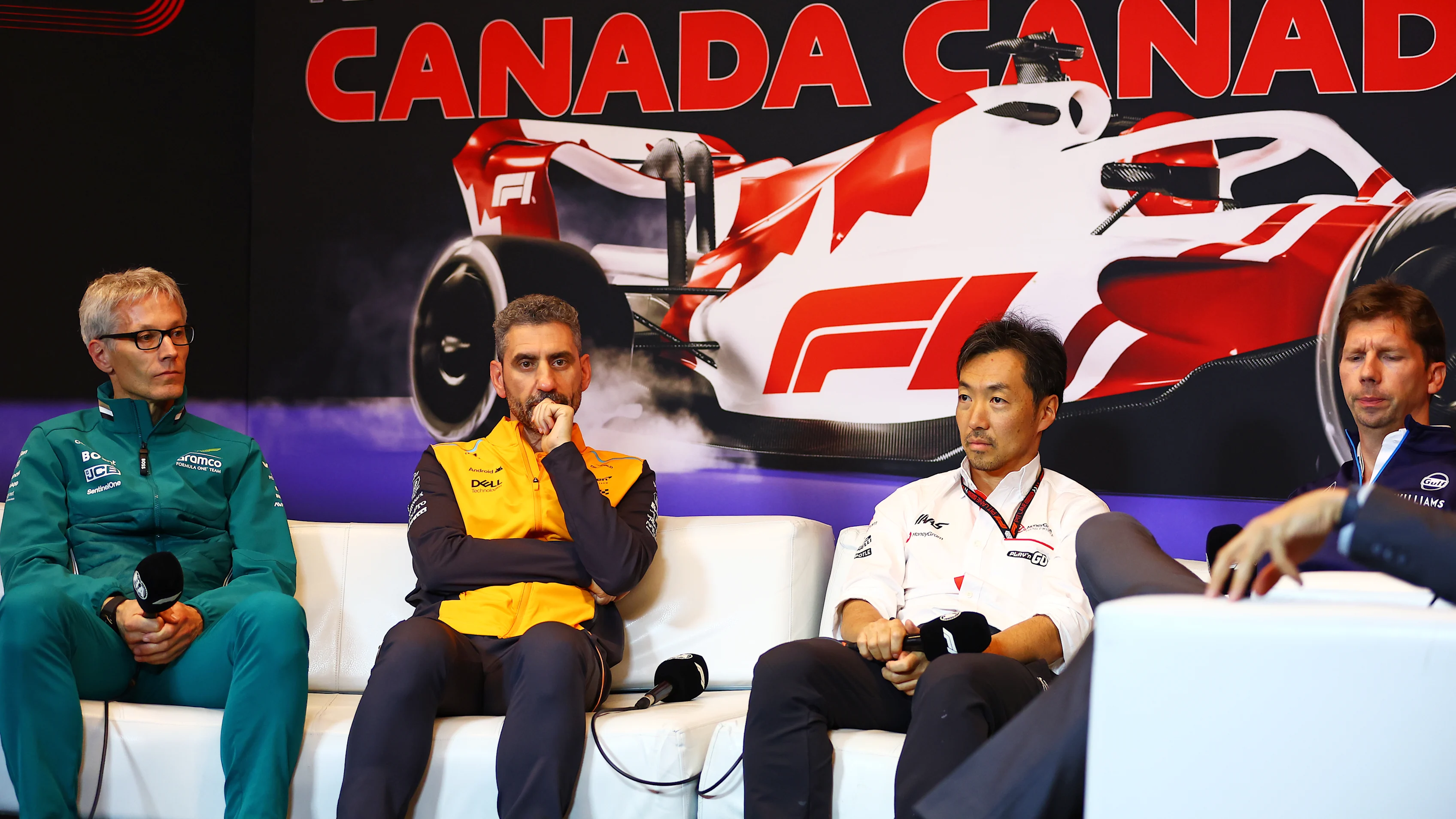
TEAM REPRESENTATIVES: Mike KRACK (Aston Martin), Andrea STELLA (McLaren), Ayao KOMATSU (Haas), James VOWLES (Williams)
Q: Mike, perhaps we could start with you. Can we start by talking about one of your drivers? Lance Stroll was in the press conference yesterday. He said he believes in the Aston project and that it's on his mind that he wants to continue with the team in 2025. What's he communicated to you? Is he staying next year?
Mike KRACK: He has communicated the same to me. I think we are in a good exchange for this situation. We know that Aston Martin is Lance's home. He prefers to concentrate on the Montréal Grand Prix here. There's already enough going on. And I think soon we will have to communicate something.
Q: Something positive. Well, let's talk about his year so far. Three points finishes. Do you feel he's taken a step forward over the winter from last year?
MK: I never had a doubt in any of this. We could see clearly that as soon as we give the drivers a car that they can use, and this is for both, the performance is there. And this has happened last year. This has happened at the beginning of this year. And also lately, we see that as soon as we don't do that, they struggle more. And this is something that we have to work on. So I think we have to move the focus away from the drivers. In this case, they need to get the best of what we have. And at the moment, it's not good enough.
Q: Well, tell us a little bit more about the car. What are the issues? How long is it going to take to sort them out?
MK: Well, the car is quite tough to drive, and we have not managed to cure that so far. So what we need is a car more benign, easier to extract potential, give them more confidence. And we had something like that in the past, and that was much, much easier for the drivers. If you lack confidence in your car, then you cannot go to the maximum. You have to take margin and you are much more exposed to these small gaps that we are having these days. And then you can end up on the wrong side of it. And then you start a race much, much further back and there is no point. So it's up to us to fix these issues. You asked me how long. I would be happy if I could tell you in two races we have fixed everything. We're working hard on it to cure these problems and we're trying to bring these updates as quick as possible.
Q: Is there one particular thing you can tell us about? If there's one issue that is the overriding problem that the drivers are talking about the most, what is it?
MK: If it was one overriding issue, we would have already fixed it.
Q: What about this weekend, just quickly? Do you feel it's going to be better here?
MK: Yeah, I mean, we are all quite excited, obviously. Canadian Grand Prix – home race for us as a team, home race for Laurence, his family. So it's a big event for us. We are all happy to be here. And yeah, the track, we need to see. It has been resurfaced. The weather is a little bit uncertain, so this could be opportunities. So we are quite positive to take the positive spirit that we have coming to this event into a good result on Sunday.
Q: Alright. Best of luck with that. Thank you, Mike. Andrea, if we could come to you now. First up, any tattoos to commemorate Lando's win in Miami? or is that Zak's thing?
Andrea STELLA: There's no requirement in the job description to have a tattoo in case of a victory. So I left the whole pressure to Zak. And I hope that he's going to have a few more.
Q: Well, I hope he's got a long arm because it seems that McLaren is in a good place with the win and the three second places in the last four races. Are you in good shape here? Do you think now you can be competitive at every Grand Prix we go to? When I say competitive, I mean can you challenge for wins?
AS: We think that we could be a challenger for podiums. If we look at the current situation from a competitiveness point of view, there are a few teams that are really in a narrow band in terms of lap time, separated by a few tenths of a second. Track layout makes a difference. Drivers can make a difference. I think we saw Leclerc was in phenomenal shape in Monaco. So there are many variables. What's important is just to try and be as prepared as possible and maximise the package. And then we see what the results will be.
Q: You mentioned drivers. Oscar was in the press conference yesterday and he said he feels he's taken a step forward in the last few races. Do you feel the same way? Have you seen that?
AS: Yes, I think that's the case. Especially after China, we looked at what we had learned in the first part of the season together with Oscar's engineers, and we found a couple of opportunities that we started to work on. And I have to say that they seem to be delivering an acceleration in Oscar's development. There's always underlying development, but in this case, both in terms of pure speed, which you can see in qualifying, And in terms of race craft, I think we have seen Oscar competing at a very high level and, like I say, an acceleration in his development.
Q: How much of that is due to coming back to racetracks for the second time in a Formula 1 car?
AS: Coming back to the same track is definitely important. There's a sense of familiarity. There's historical data. There's a lot of things that you review after year one. But in addition to that, it's also that you have more races that you do in Formula 1, more races to work with your engineers, more races to just understand what you need to work on. So I think it's not only the fact that you come to the same track for the second time, it's just the overall journey of development, which I have to say for Oscar is quite impressive.
Q: Andrea, thank you. Ayao, let's come to you now. Monaco was a tough moment for the team. Can you tell us how much damage there was to the cars and how big a job it was to get them ready for this race?
Ayao KOMATSU: Yeah, of course, Kevin's car had quite a bit of damage. In terms of how big a job that was, it wasn't huge. It was not a minor job, but still a reasonably big job. But it's not major, major, if you like. So there was no concern over preparing a car for this event, if you like. But yeah, that was a reasonably big damage.
Q: And when you have both cars taken out as they were, are there any instructions from the team principal to the drivers about how to go racing at the next event, this weekend?
AK: Yes and no. But of course, you have to look at everything in context, right? You know, Kevin had lots of criticism after Miami, and we spoke about it a few times before Imola, in various points. And Imola, he delivered a really good race from his side. Really, I felt like if the team delivered a good strategy, he should have scored points in Imola. So that was the best way to answer the critics, right? And then Monaco, he had the speed from FP1, and then qualifying couldn't quite deliver. Then, of course, we had a team issue such that meant we had to start from the back. Then from that moment, you know, we had to go for alternative strategy, you know, splitting the drivers. So you’ve got to play the long game. So the decision-making process at that instant to go for that gap, which wasn't really there, it's not necessarily right. and then of course you know he expected Pérez to leave more room for him, but that's not up to him. in the end, you know, there was a point where everything was under his control, where he could have made a decision to back off, which he didn't. So we spoke about all this completely openly. Then just reset for this weekend again. You know, he's done it in Imola, so he needs to deliver clean weekend here and I think this circuit could play to our car's strengths and hide our weakness, shall I say. And Kevin's good in a circuit like here. So, yeah, I expect him to be able to deliver a good, clean race weekend here.
Q: While we're talking drivers, how close are you to announcing your 2025 line-up?
AK: Yeah, not too far, not immediate, but not too far. So let's say, yeah, within a couple of weeks to months, shall I say.
Q: Weeks or months? This will be the first driver pairing chosen with you as team principal. Are you clear in your mind as to what sort of pairing you want? Do you want two experienced drivers? Do you want to mix, youth and experience? Is that clear in your mind?
AK: Yes. Yeah. I mean, as a team, you know, we are growing up. We are improving the team. So a pretty dynamic situation, so I think the mixture of good youth and then experience to give us the reference would be a pretty exciting combination.
Q: Alright. Thank you for that. James, thanks for waiting. Let's come to you. And well, we're talking drivers. So can I start by saying two words? Carlos Sainz. There's been a lot of speculation about him and Williams in recent weeks. What's the situation?
James VOWLES: Well, first and foremost, I think Carlos is an exceptional driver. He's a race-winning driver. And I think any team would be privileged to have him as a part of their organisation. But more than that, there's nothing to say at the moment. Yeah, nothing more than that.
Q: So, weeks or months?
JV: Definitely, 100% by December, I'll be able to tell you.
Q: OK. Andrea, can I just quickly bring you in on this while we're talking. Carlos Sainz? Obviously, you've worked with him at McLaren. What are his greatest strengths as a driver? What would a team be getting when they get Carlos Sainz?
AS: Carlos is an interesting driver, I have to say, not only for the qualities that James reminded and that led him to be a race winner, but in particular, I would highlight that he is very rational. He needs to create a plan in his head around what is the fastest way in a lap, what is the fastest way of racing. He adds a lot of rationality to his instinct. And the importance is that when you have this rational elaboration, it's also easy to communicate. And then it becomes a big asset for the team because what he's processing, what he's seeing as an opportunity or what he's seeing as a problem, it becomes very clear for the team. It’s very well communicated and we can do something about it. So I think for us has been definitely one of the leading variable in the development of the team because of these characteristics.
Q: James, you like the sound of that?
JV: Sounds excellent, doesn't it? Yes.
Q: OK, quick word on Logan. He said yesterday that he feels he's done a really good job in the last few races, but it might not be that evident to the outside. Have you seen him take a step forward?
JV: I think there's no doubt, actually very similar to Oscar, second year of running, and you are now seeing the confidence start to build as a result of it, and there is performance there. We also haven't had the cars in the same spec for a period of time. Some of that's still due to the earlier damage that we're building up to, some of that is because we pulled forward upgrades, and there was simply not enough to put across two cars. He is continuously evolving as an individual, as I hope he would be in that circumstance. Is he where I need him to be target-wise? And that's the big question of things. We need more from him, really, to be able to save his seat in that sort of circumstance.
Q: OK, look, final one from me. Just throw it forward to the rest of this weekend. Do you think the Circuit Gilles Villeneuve will suit the car better than Monaco?
JV: I think Ayao summarised it well. I think the Haas is actually quite good in these conditions, so it'll be a close fight with them. But we had a strong race, not just last year, but across the last few years. There's some characteristics that are well-suited. I think, furthermore, you've seen the weather conditions today. That's what's going to be here all across the next few days. It's going to be rain on and off in a drying condition. So that creates opportunity, one I'm actually relishing and looking forward to.
QUESTIONS FROM THE FLOOR
Q: (Jon Noble – Motorsport.com) The FIA released an image, concept images of the 2026 cars and some details about what's being planned, but the rules aren't being don't need to be signed off to the end of this month. Are you satisfied with where we're at with the regulations, what's being planned for, and have you got any concerns about things drifting past June the 30th and then we're getting locked by paralysis of needing team approval or changes not being made at all?
MK: Yeah, yesterday there was a first publication. I think we are quite far away still from the final one. And I think it's now up to all stakeholders to discuss, work on possible issues in a constructive way, rather than using the media to try and put something forward. So I think over the next weeks and months at TAC level, I think we will be able to iron out all the issues that are still there.
AS: As for McLaren, we are in agreement and we support the intent and the objectives at high level that were stated in the press release. However, if we look at the regulations in the draft form that has been circulated, they are still far from being able to achieve those agreeable objectives and intent. So it is the time for the FIA, F1, and the teams to work together, listen to one another, and contribute to form a solution that will allow the sport to meet those objectives. I think if we meet those objectives, we're going to have Formula 1 in a good shape, but we need to make sure that when it's the time of implementation, we actually deliver a product that meets those targets and objectives.
AK: I honestly don't have much to add. There's more work needs to be done, but we just need to do it in a collaborative, transparent way to achieve those objectives Andrea mentioned.
JV: I think the bit I would add to it is that there are probably two different concerns at the moment. First and foremost, there's the aerodynamic side, so what we're doing with either freedom or physically how fast the cars will be. And then the second side of it is where we are on weight. And I've been vocal already a few weekends ago, I put it from William's perspective, but I don't think anyone will hit that weight target particularly. It's going to be incredibly difficult, and I think that needs reviewing. because as someone that spends their life going through marginal gains, taking weight out of a car, it's not a fun thing to do. On the second side of things, I would absolutely agree with my peers here that it is in a position where if we work together, and we will do going forward on this one, we can get it to a really good position, I think. It's a solid foundation to work from, but we do need to clear up some aspects of it.
Q: (Joost Smedema – NOS.NL) A question to Andrea. Lando said yesterday a driver who can fight for a pole or a win is able to push a little bit more for hundreds or thousands of a second more than when you drive for 15th place. Do you notice as a team principal any difference in the behaviour of Lando in this or in the team?
AS: No, I would say I don't notice that his commitment to going for the last millisecond has changed at all. If anything, actually, I would observe this has changed in the opposite direction. Like last year, if anything, in some of the qualifying sessions, we were kind of pushing too hard when there wasn't necessarily the need to do so. I'm thinking of Mexico, for instance, in Q1, where we lost the lap when we could have gone through Q1 with just driving around on a new set of Softs. So I do not necessarily see this kind of difference. I do see Lando being very concentrated, very focused, somehow recalling what I said before about reviewing every event, taking all the opportunities to keep developing. So that's a great ethos that Lando shows, which is an example for all the team.
Q: (Simon Olivier Lorange – La Presse) Sorry, question for Mike. Yesterday, Fernando told us that regardless of the current standings, he feels like the team is more advanced, more developed than last year, and it's going toward the good direction. How do you see that? Where do you see the team next year? Do you see yourself closing the gap between you and the top teams? How do you see that?
MK: Yeah, I understand what you mean and also I think I understand what Fernando wanted to say. We are on a journey to become a bigger team, a top team. We have quite a lot of infrastructure projects in the making. And I think the comment that he made is probably related to last year, we had quite a lot of good results, but we were not ready as a team. We were in a different position. We still had our old factory. Nothing had really changed. I think we have grown over the 12 months, and that is what he refers to. Unfortunately, the results are not as good as they were last year, but this is very often circumstantial. Other teams have made more progress than we have done in comparison. But overall, it seems that we are in a better place, how we go about things, how we discuss things, how we make changes. And I think this is what he feels compared to last year. And yeah, I think this is something to build on going forward and the results will then come.
Q: (Nigel Chiu – Sky Sports F1) Question for Andrea please. Charles Leclerc was telling us yesterday that Ferrari can still beat Red Bull in one or both of the championships this year. Do you think McLaren, even though you guys are a bit further back, can still be in the chase in the second half of the season, do you think?
AS: First of all, I do agree with Charles that Ferrari is in the quest to become a world champion on both championships. As for McLaren, you know, we look at the classification, we see we are in a good position, we look at the plot of the points, we see we are in a good gradient. But the second after we do that, we forget and we think about what do we need to do now to be good at the next race? What do we do now to be good at the following races, delivering projects? So we don't really focus on outcome and results. We focus more on the process and on being always performance-focused, let's say, and delivery of projects. I think in Formula 1, if you focus too much on results, you may be easily carried away.
Q: (Edd Straw – The Race) Another one for Andrea. You referred to areas in the regs where it's falling short of achieving those objectives and intent. Can you be a little bit more specific? Is that about hitting the drag and downforce figures? What exactly are the gaps you're seeing?
AS: Yeah, I think the main gaps are in Article 3, which is the aerodynamic regulations. And the second one is I still think that the way in which the power units are planned to be used needs to be adjusted. We can still achieve a 50-50 concept, which is a nice concept, but it can be achieved in a way that doesn't put so much of our requirement on the chassis side, which then is difficult to meet. So I think from a power unit point of view, likewise from a chassis point of view, it's time that all parties understand that they need to contribute to the success of the sport.
Q: (Jon Noble – Motorsport.com) I'm not sure who's run their ‘26 car in the simulator so far, but if you have, what performance profile are you getting on the car in terms of lap time to now, and how important is it that Formula 1 remains at the absolute pinnacle of performance and doesn't drop back behind any other category like Super Formula or IndyCar, for example?
AS: Well, I would say that at the moment, the way cars are in the draft version of the regulations – and we need to say draft, because like we say, there's a lot of work to do – the cars are not fast enough in the corners and too fast in the straights. So these two aspects need to be rebalanced.
JV: In the sim, yes,. I would say for me, to answer your second bit of the question first, it's imperative that we are still the leading series in motorsport. That's how I see us. We're the pinnacle of this. And therefore, as a result of that, we need to make sure that we're maintaining the performance and speed we have. And right now, I think Andrea summarised it well, there's a mismatch there, fundamentally. The performance difference to an F2 car could be as small as a few seconds. And that's starting to get a little bit tight, especially when you compare it to the other series around the world that you've nominated. But also, as Andrea mentioned, these are draft regulations. And just this week, in fact, there were two changes which took quite a bit of downforce away. I'm confident we'll get to a better solution in that regard. It's not that we're so far away. Just a little bit more work required, though.
Q: (Jake Boxall-Legge – Autosport) We've looked at the draft regulations, obviously, whether what we've been shown, you know, there's X and Y downforce modes as kind of quite a complex situation with regards to how the MGUK is deployed. Do you all think it's a little bit complex? Isn't there a sort of way that we could be, you know, simplifying things a little bit to improve the spectacle?
JV: It goes back to what's the intent behind these rules. The intent behind these rules is let's go to a different power unit formula, let's go to synthetic fuel, let's go to a different environment in that regard. And I think all of that is quite good. In terms of the X modes… So, just for clarity, that's effectively reducing drag in a straight line and the Z mode, which is increasing downforce through the corners. I actually quite like the concept to be automated. It's not that the drivers will have to twiddle anything on the steering wheel. We can optimise the car in those circumstances. I actually think it's quite a clever way of having a more efficient car in that environment. So that complexity of things, personally, I'm comfortable with it, and I think the world will get used to it quickly. I think what we're talking about more is how do we make this a product that is just the pinnacle of motorsports, and what's the right formula that achieves that?
AK: And also in terms of freedom of design, especially on aerodynamic side. At the moment in the draft regulation, I'm not sure if that balance is hit right in terms of how things are prescribed. So again, all those philosophies, how we present ourselves as the pinnacle of motorsports, in terms of engineering as well, to have some freedom or probably a bit more increased freedom in aerodynamics, that is important as well. So again, various aspects we need to look into to make it really represent the Pinnacle Motorsport.
AS: I would just add that I think some part of the complexity is more in the language than in the substance, because when we talk about the X-Mode, like it’s the DRS open, potentially even at the front, but the concept of opening DRS is very well established. And also I think that some of the complexity that is still lingering on and I think still especially on the power unit side, is because of the immaturity of the regulations. I think once they mature, they will become even simpler. Or at least I would hope that we can achieve both things through the work of development and collaboration.
MK: Yeah, I think it's a lot of engineering language. It's like Z-mode, X-mode, energy management and so on. I think, you know, in terms of complexity, I think we need to focus on the product and the fan, and the spectator. I'm a bit scared that in 2026, we will have driver press conferences or driver interviews speaking about all these technicalities that a lot of people will not understand and lose interest just because of that. So that is something that I think we need to be really careful. If we have different energy management from track to track or constraints on the car that makes one car maybe go to the front, one to the back, and then how to explain this? So I think that is something that we really need to keep in mind.
Q: (Joost Smedema – NOS.NL) Another one for Andrea, please. Could you give us some more insights in the point you found at Oscar where you could improve his performances after raising China? What did you find exactly and how did he improve afterwards?
AS: Specifically in China, that was a race in which tyre degradation and managing tyre degradation was important. And I think we reviewed what was the objective entering the race in terms of managing tyres, how we executed, how we interacted with the driver during the race, what should have been the contribution of the engineers, what should have been the realisation of the drivers. That's the kind of things you review. And in all those aspects, we found ways of doing a better job altogether. So that's the kind of conversations you have with a driver to then try and move on, not only driver, but also the engineering support.
Next Up
Related Articles
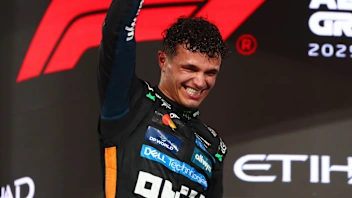 Every twist and turn from a dramatic 2025 title battle
Every twist and turn from a dramatic 2025 title battle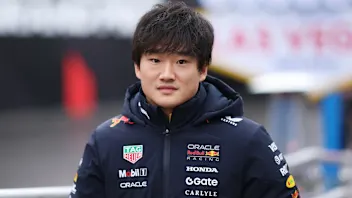 Mekies on ‘very difficult’ decision to demote Tsunoda
Mekies on ‘very difficult’ decision to demote Tsunoda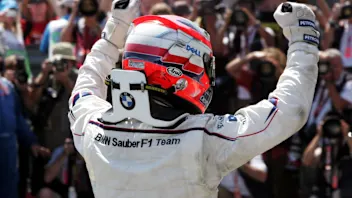 Tremayne'Why I’ll always have a soft spot for Sauber'
Tremayne'Why I’ll always have a soft spot for Sauber'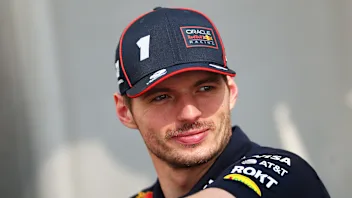 Verstappen reflects on Mercedes talks and F1 future
Verstappen reflects on Mercedes talks and F1 future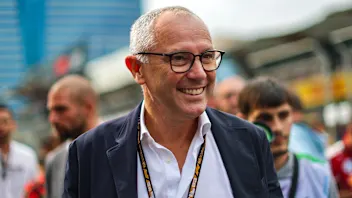 F1 CEO Domenicali reflects on 'phenomenal' 2025
F1 CEO Domenicali reflects on 'phenomenal' 2025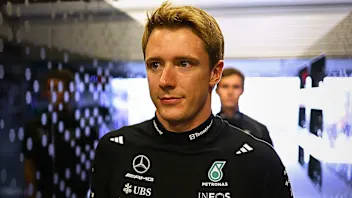 ExclusiveVesti on life as Mercedes reserve and his F1 plan
ExclusiveVesti on life as Mercedes reserve and his F1 plan